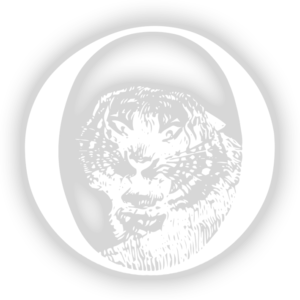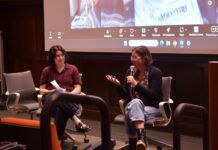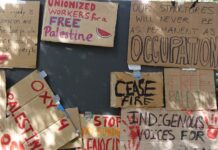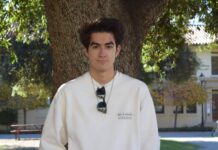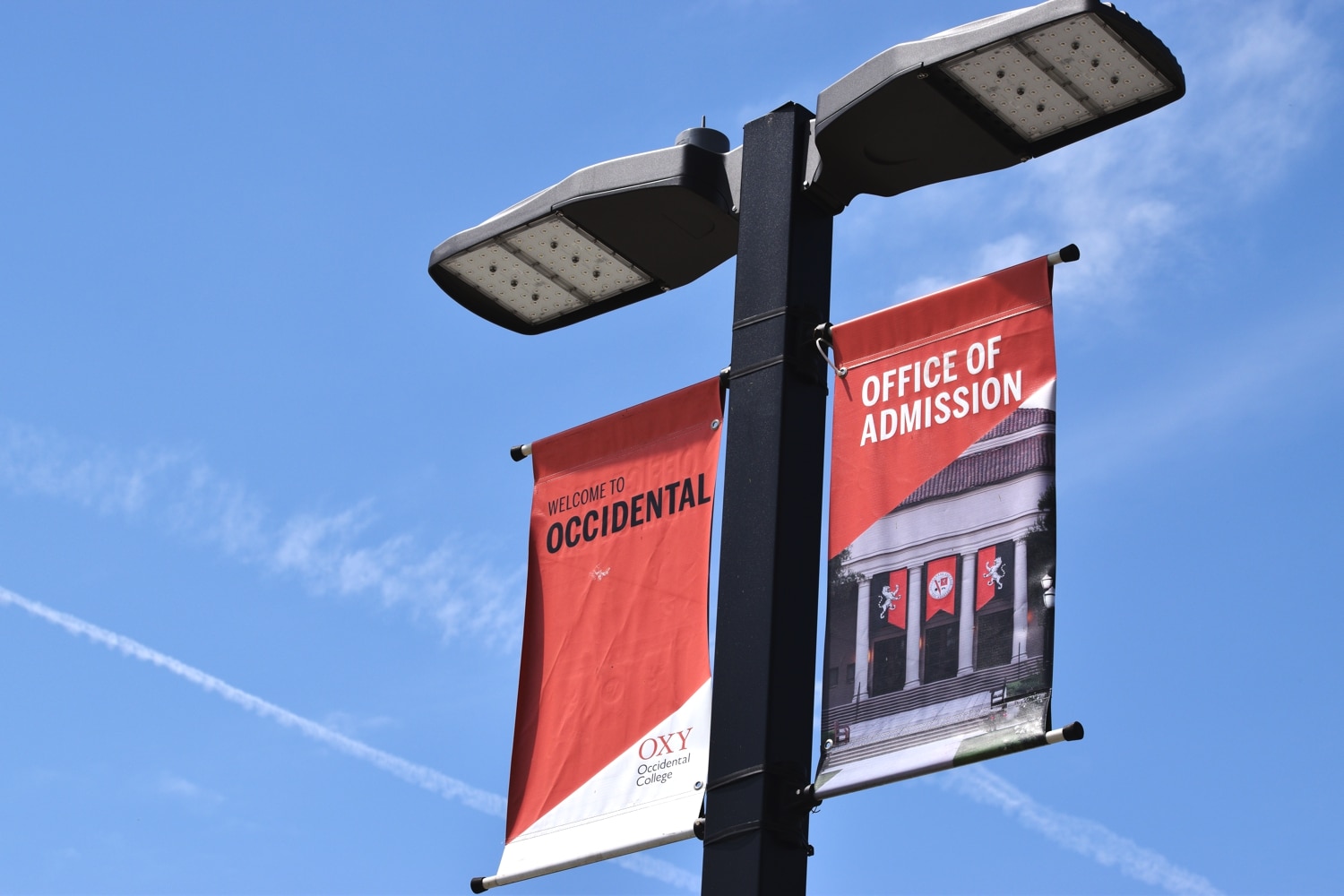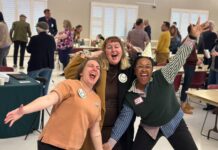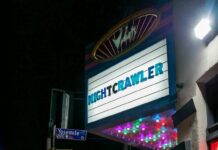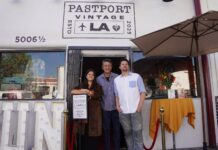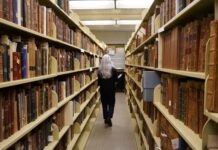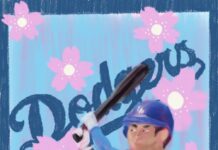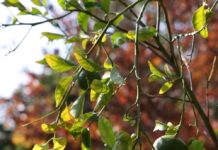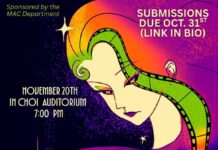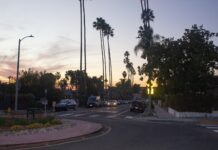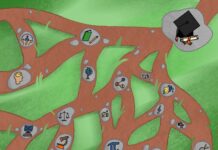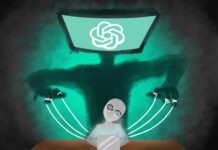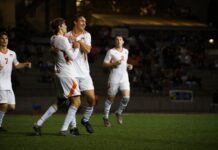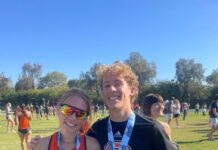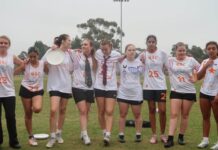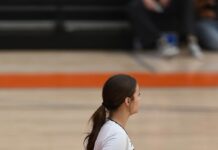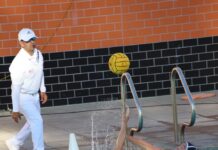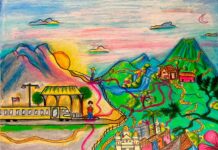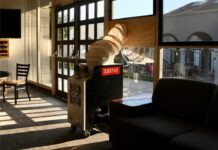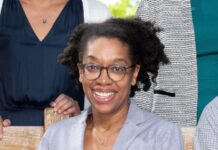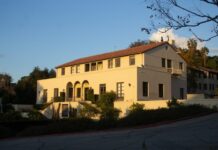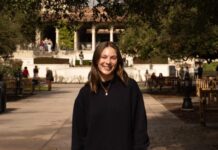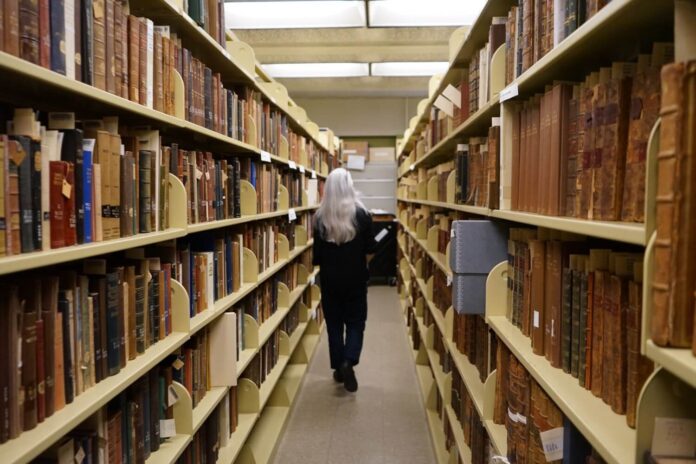
Tucked in the corner on the quiet third floor of the Mary Norton Clapp Library, stands a wooden, often open door with a sign that reads “Special Collections.” Behind that unassuming door lies illuminated manuscripts from the 1200s, Japanese Manga shelved neatly, a recording of Robert Frost’s speech at Occidental, an Olympic Torch — just a small selection of the preserved materials that make the Special Collections department unique.
In a different corner of the library, down in the basement, the door to the Lowercase Printshop marks the home of another collection, filled with student-made books, dingbats (little decorative pieces of type), two formidable printing presses and an especially loved printing block of a chair.
Grounded in these two corners of the library, Occidental’s Special Collections and College Archives department lives and brings thousands of archival materials to life. The college’s Special Collections is the overarching department that holds the College Archives, Special Collections and the Book Arts Program, which houses the Lowercase Printshop. According to Special Collections Librarian Helena de Lemos, Special Collections acts like a mini-library, except that they do not loan material for various reasons, including the rarity and fragility of the materials.
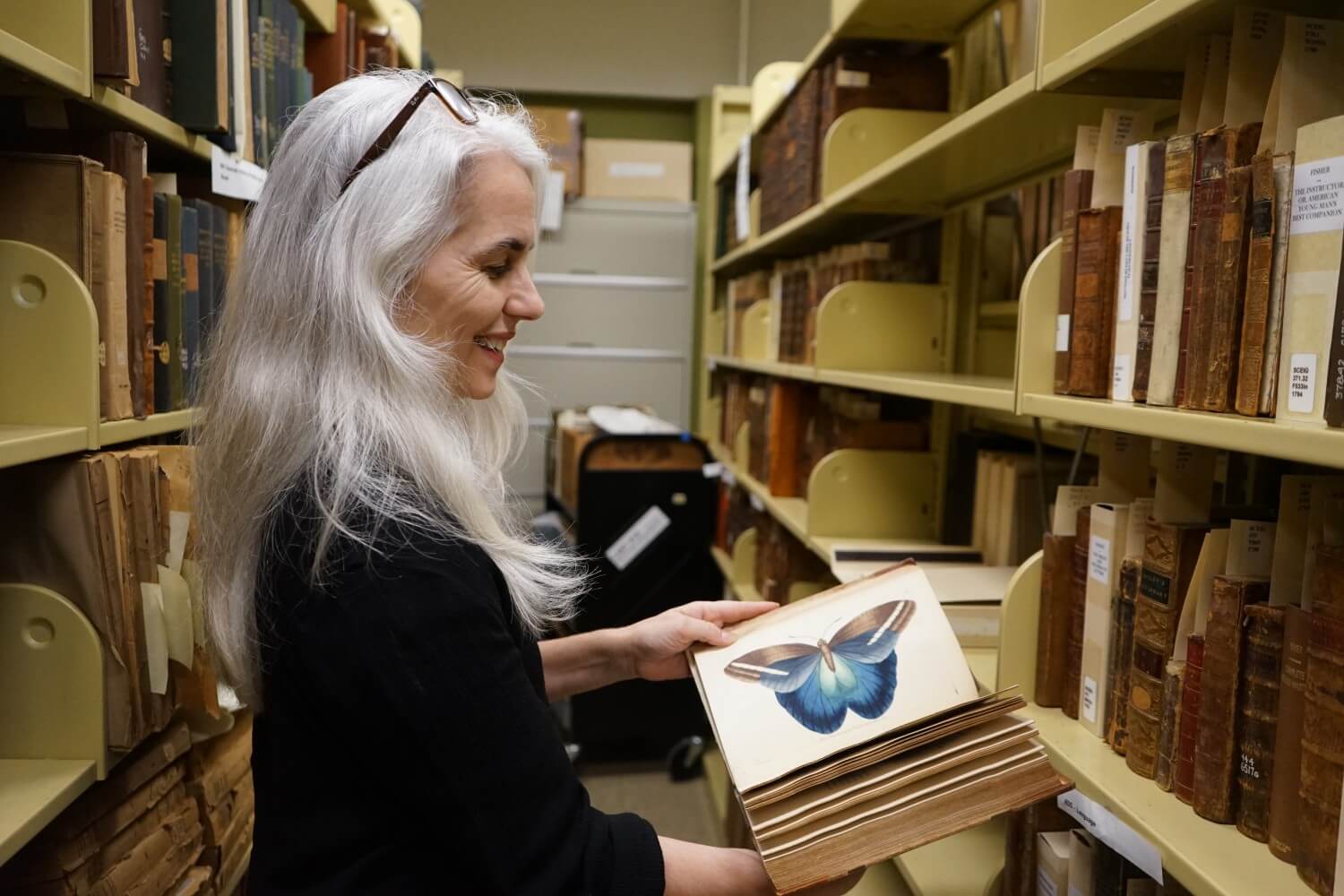
Walking through the stacks of Special Collections, de Lemos stops to open an illustrated animal book from the late 1700s. She smiles, pointing to a blue butterfly.
“Even though I’ve been here a while, every day is like this. There is something that I’ve never seen, of course, because I haven’t opened every book,” de Lemos said. “It is always a constant, constant delight.”
De Lemos said she first came to Occidental as an intern while she was completing the Library and Information Science master’s program at UCLA. According to de Lemos, upon arriving at Occidental, she was shocked by the size of Special Collections. She said the collections are primarily supported by donors who gave to the college as it was growing throughout the 20th century.
One of the most famous donations, according to de Lemos, is the Ned Guymon Collection of Mystery and Detective Fiction. Donated by a 1922 alumnus, it is one of the largest mystery and detective fiction collections in the world, with over 14,000 items. Another notable collection, the Robinson Jeffers Collection, includes materials that highlight the life and work of poet Robinson Jeffers (1904). In addition to the large collections, Special Collections houses individual items such as a page from the Gutenberg Bible and a first edition of Mary Shelley’s “Frankenstein.”
All of these rare and fragile materials live in the slightly cooler stacks of Special Collections, waiting for a librarian to pull them out into the Reading Room. Professor Devin Fromm said he takes his First Year Seminar (FYS) course, Detective Fiction, to see the Ned Guymon Collection, which the students interact with in Special Collections’ Reading Room.
“[Occidental has] an enormous collection of mystery and detective fiction, and so [de Lemos] asked if we’d be interested in partnering,” Fromm said. “I’ve taken not only my detective fiction class there ever since, but [for] every class I ever teach […], I make a day in Special Collections.”
Special Collections partners with professors through the Instruction Program, which began in 2010, according to de Lemos. The Instruction Program brings Occidental classes to Special Collections, where de Lemos said she can curate a collection related to the course’s material. De Lemos said Occidental was one of the first institutions to implement a Special Collections Instruction Program, and it has been successful ever since.
“I think when classes [visit Special Collections it’s] like this little trip to a museum,” de Lemos said. “And we can offer this experience in a much closer way, you can actually touch things and then link in your minds how all these objects fit together.”
Fromm said his classes benefit from visits to Special Collections, as they allow his course material to go beyond the syllabus.
“Hearing about [a topic] in the classroom is one thing,” Fromm said. “Going to a different place and touching, feeling, experiencing, seeing [it] for yourself is another. To reinforce the intellectual message is letting students see it for themselves.”
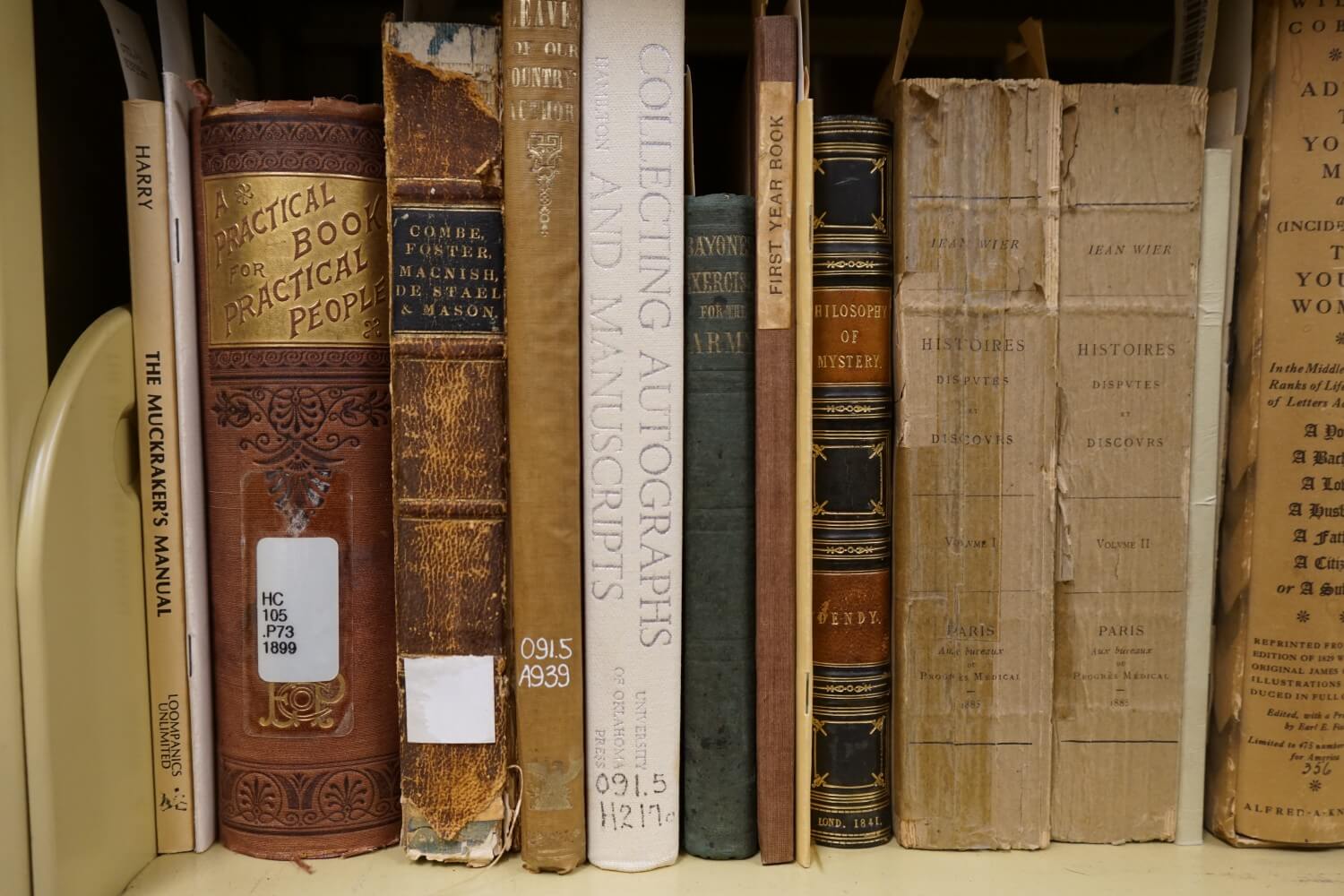
When one of Fromm’s classes read “Adventures of Huckleberry Finn,” they visited Special Collections, where de Lemos put out first-generation typewriters. This curation was in part because “Adventures of Huckleberry Finn” is rumored to be the first novel written on a typewriter, Fromm said. On another occasion, while reading “Frankenstein,” Fromm said he brought the class to Special Collections to see the first edition that the college owns. According to Fromm, these visits to Special Collections teach students to look for themselves and comprehend the historical contexts of their course material.
“The old ‘show don’t tell’ rule is really, really important and Special Collections can really deliver on that,” Fromm said. “Look for yourself. I can tell you that the modern second industrial revolution was disorienting, but look at what the daily newspapers were like. Imagine this is what you read on your way to work, it can really bring it home.”
In addition to class visits, de Lemos said Special Collections puts on exhibits for the Occidental community. One can find the exhibitions on the third floor in Special Collections, and in the glass cases on the first floor of the library. Recently, de Lemos said, Special Collections put on a homecoming exhibit that featured material from the College Archives. College Archives Librarian Alanna Quan ’16 is the college archivist, who works with the College Archives. According to de Lemos, the College Archives is another section of Special Collections.
“College Archives, as the name implies, really relates to [Occidental] — it’s all the documents related to this institution,” de Lemos said. “You could even make the case that it’s the most valuable because many of those items are unique: photographs, the Board of Trustees minutes from 1887, from when the college was founded, all this documentation that tells the history of this institution.”
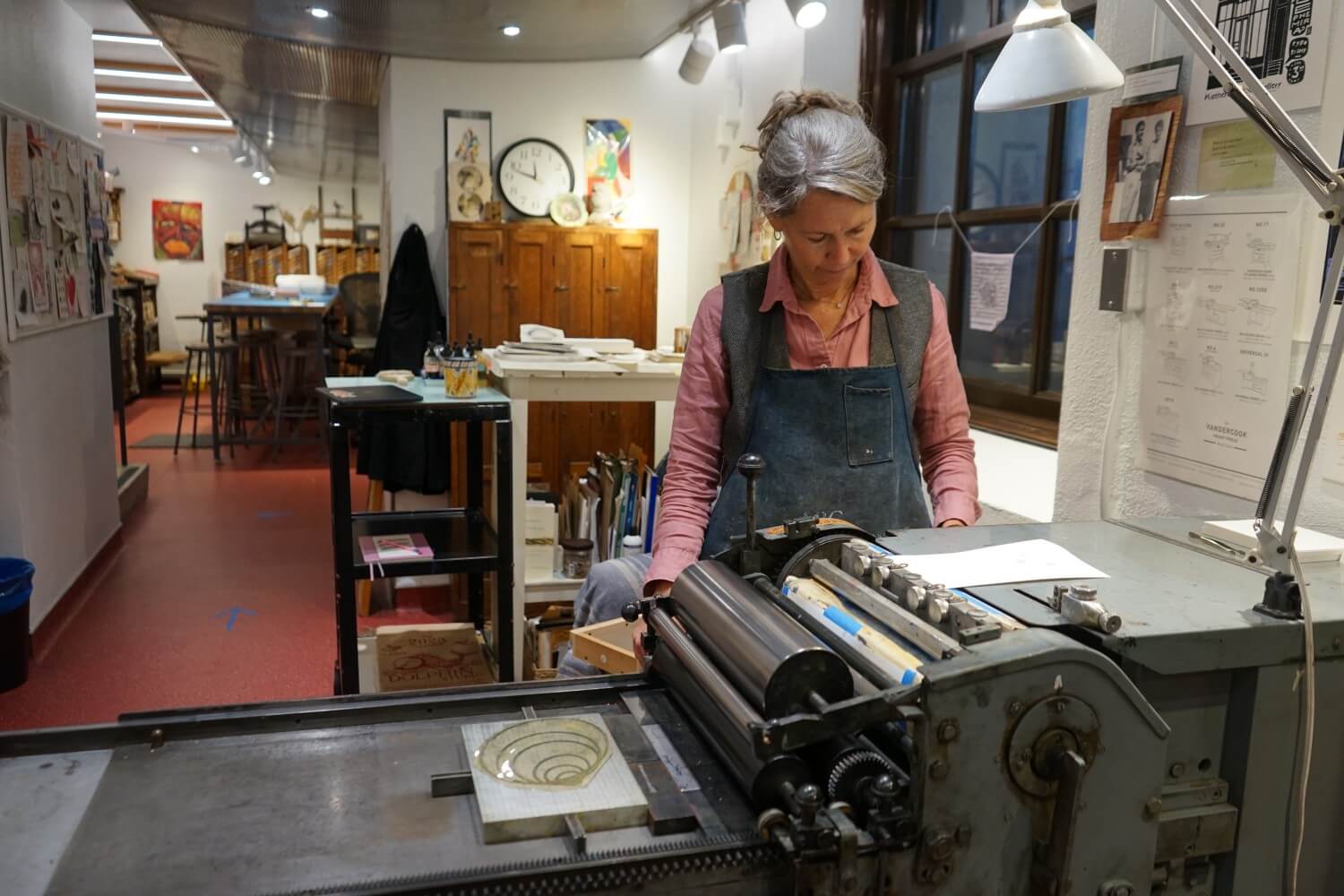
According to de Lemos, the Book Arts program is another essential section of Special Collections. Jocelyn Pedersen, coordinator of the Book Arts and History of Print Cultures program, said, logistically, Special Collections oversees the Book Arts program, and the two often work together with the artist and the fine press books the college owns.
In her studio, Pedersen rested her hands on the two large printing presses, with hand-printed name tags reading “Larry” and “Fay” adorning them.
“It starts with this incredible couple, Lawrence Clark Powell (1928) and his wife Fay Shoemaker Powell (1932), who attended this college in the 1920s,” Pedersen said. “They met here, they married and [Lawrence] went on to become one of the most important librarians in California […] He left an endowment to the college to promote the book arts.”
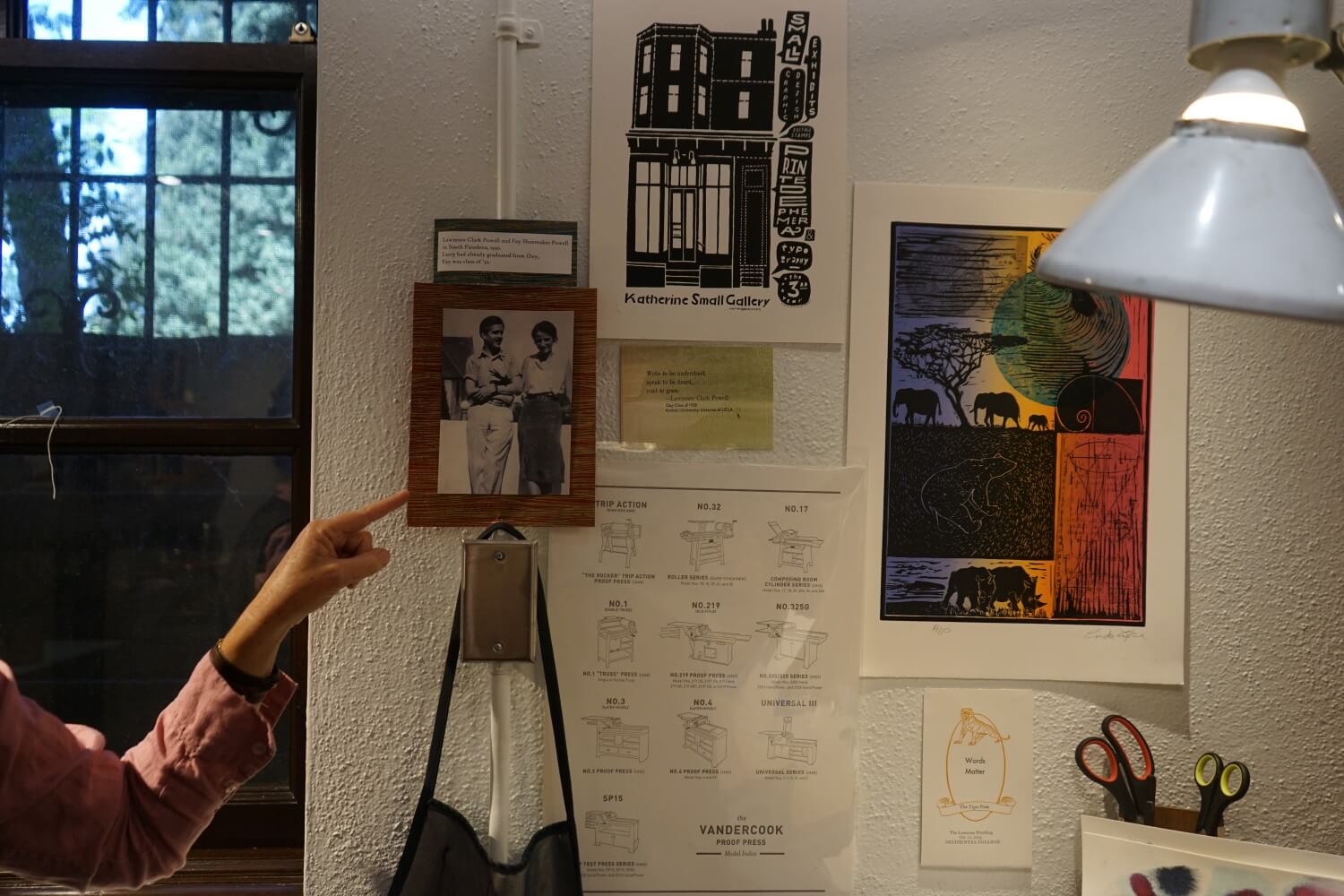
The endowment sat quiet for a few decades, Pedersen said, and the college used it to hire a few book artists who taught with the letterpress equipment. When Pedersen joined Occidental in 2010, she said Professor Linda Lyke brought her to the art department. In Fall 2023, Pedersen and the letterpress equipment moved to the library, where she said they found their home in the Lowercase Printshop. There, Pedersen said she teaches classes and workshops on letterpress printmaking.
“I love what I do, [the] students light up,” Pedersen said. “I mean, there’s not a student who doesn’t peek in that door, or walk in that door, and go: ‘What is going on in here? I want to take this class.’”
The letterpress studio is unique, according to Pedersen, because only a few other colleges, especially of Occidental’s size, have a studio like Lowercase. It is in this unique space, Pedersen said, that the Book Arts program is able to flourish. She said everyone should take advantage of the resources and unique community opportunities available in a printshop.
“I see my role here as exposing students to the incredible, interdisciplinary art of making a book,” Pedersen said. “You can come at this from every angle. Are you really interested in the illustration of books? Are you interested in typography and learning to print type? Are you really interested in the process of printing because it can be seen as another form of printmaking?”
In the Lowercase Printshop, Pedersen and her students create prints and books, using the type and printing presses, Larry and Fay. One year, Pedersen said her advanced class handmade a book titled ‘Volume’ about silence and sound — a perfect example of a collaborative project that brought the students’ ideas to life.
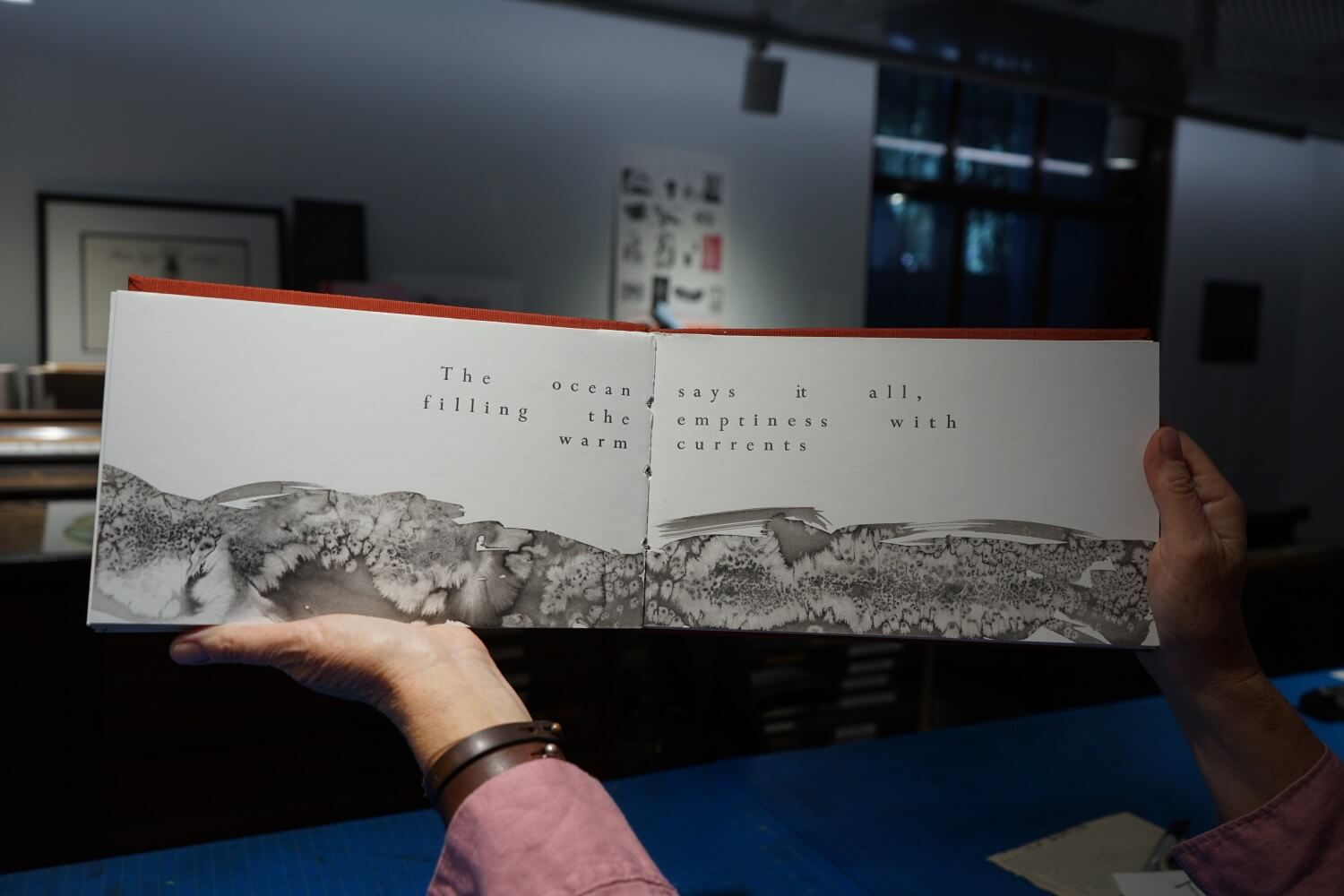
“It is really unique and it’s really special what I’m doing down here,” Pedersen said. “[I am] promoting image and text and how image and text are in conversation with each other and that you can make books or prints that do that. You’re dealing with images and texts every day, but wow, here you get to actually handle physical things that allow you to make them, make your ideas real.”
Pedersen’s former students Maya Sisk (senior), Olivia Johnson (senior) and Amare Askerneese (senior) came together to form the Oxy Letterpress & Book Arts club. The club hosts events that allow the larger Occidental community to interact and create with the letterpress process. In the Lowercase Printshop, the club will host Poetry Grams: Halloween & Dia de los Muertos Printing Event, 3 p.m. to 5 p.m., Oct. 31.
Ella Louise Alpert (senior) said she is a student worker in Special Collections and the Book Arts Program. In Special Collections, she works as a researcher, and for the Lowercase Printshop, she is a shop technician, Alpert said. Through these roles, she said she loves working with the materials and enjoys the tactile aspects of letterpress and Special Collections.
“[Special Collections is about] being able to connect more deeply with the item that you’re interacting with, especially in an analog fashion,” Alpert said. “As students, we go so fast all the time, and I don’t even think we realize it. It’s one thing when you’re typing on your computer and you’re writing this essay and the words instantaneously form as soon as you have them, and then you get to look at these objects [in Special Collections] that took thousands of hours of grunt work.”
Fromm said his experience with Special Collections and observations of his students engaging with tangible materials show how the department creates a more connected learning experience.
“We just live in a much more ethereal online world now,” Fromm said. “And so anytime we’re brought back to the material world and the tactile experience, I think it is nice. It’s a nice opportunity to [interact with] something like Special Collections, and the Lowercase Printshop.”
The experience of viewing an archival piece online versus in person is completely different, according to de Lemos. She said she loves seeing students’ reactions to the material that she puts out.
“I see the students’ reactions when they come to look at Japanese prints, for example,” de Lemos said. “They might have seen them online, they’ve seen a class on a screen, and they might have seen even more important works. But they come here and they see these real prints from the 1800s, and they can actually feel the paper and they can see the color on the paper.”
De Lemos said she always hopes to get more students involved in Special Collections, especially more science-oriented students. She said they house a large number of illustrated science books that could be interesting tools for student research, or simply a way to expand their interests.
“We are welcoming,” de Lemos said. “I always say this when students come here for our classes; they don’t have to wait for a class, we’re here. You can always see things, whatever your curiosity, even if you don’t know what you want to see. Just come by and take advantage, make use of the opportunity of being at Occidental these four years.”
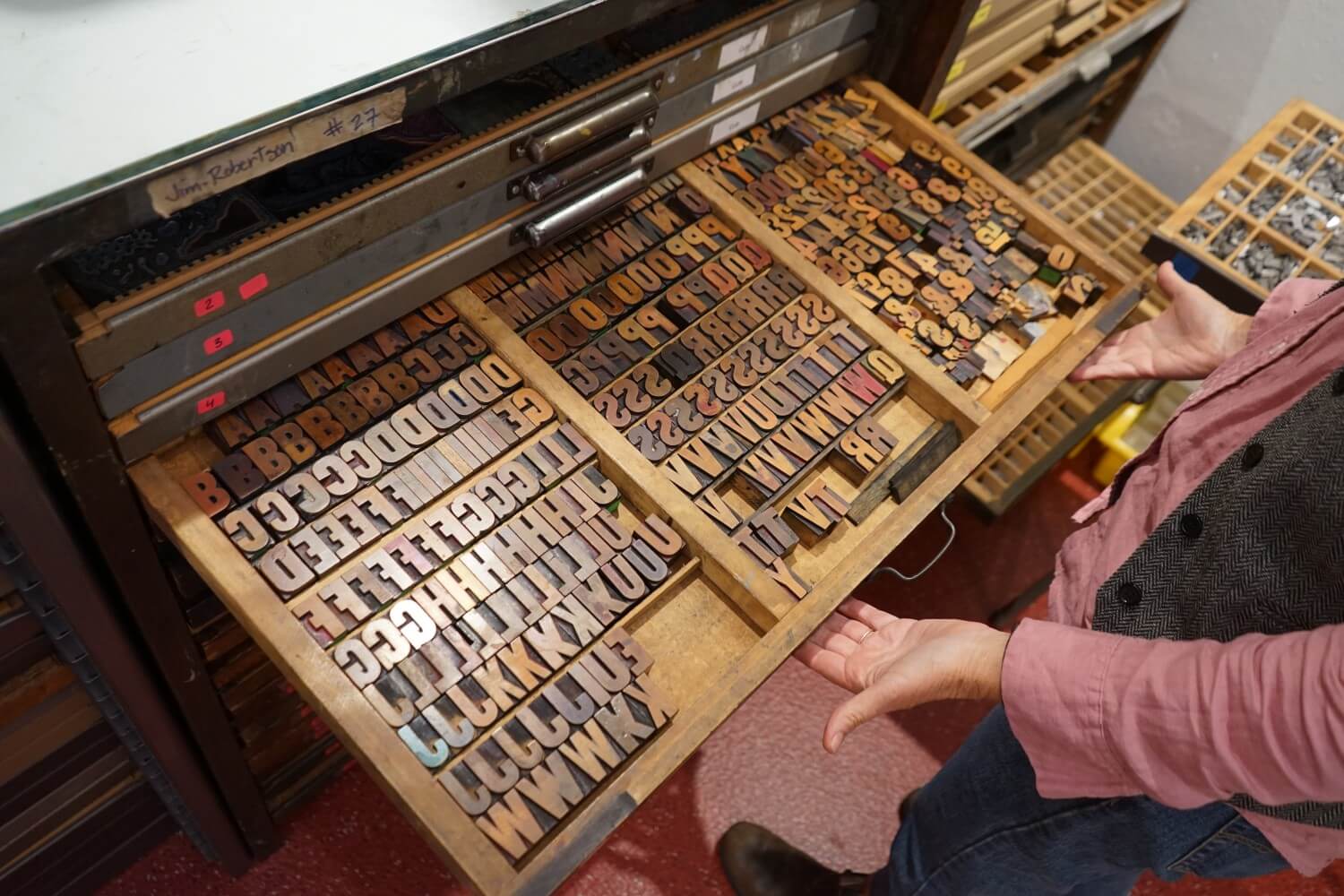
Through her work with de Lemos, Alpert said she recognizes the value of Special Collections. Alpert is currently working on scanning a collection of film negatives of newsworthy events, such as natural disasters.
“I think Special Collections is one of the facets of our campus that flies the most under the radar,” Alpert said. “I don’t think people use it as a resource enough. There’s so much cool stuff that this school owns if you have the motivation to look for it and seek it out.”
There are so many reasons to visit Special Collections, Alpert said, and de Lemos and Quan will be more than happy to help students, no matter what they are interested in.
“If you have anything you’re interested in, and even if you think it’s niche,” Alpert said. “I bet Special Collections has something on it, whether that be pictures, or newspapers or something else.”
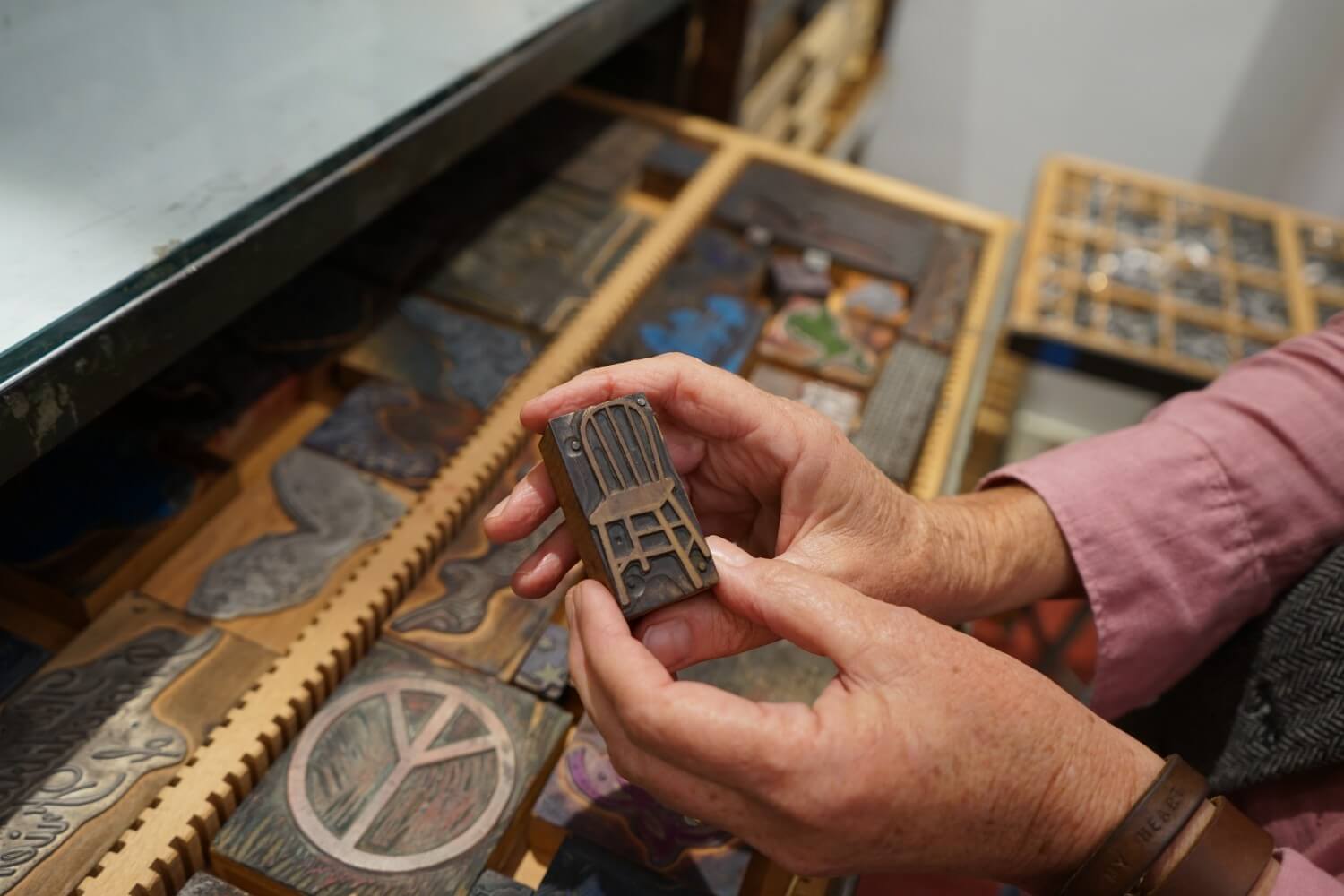
Students can make an appointment with Special Collections or drop in Tuesday through Thursday, 10:00 a.m. to 3:00 p.m., according to de Lemos. She said she encourages students and any member of the Occidental community to stop by and explore all that the department has to offer.
Walking through the stacks of Special Collections, de Lemos stops often to pull out her favorite books from the shelves.
“There’s always surprises, constant surprises,” de Lemos said. “These objects, they speak to you and tell stories. Any object can tell stories.”
Sleeping behind these two wooden doors, the stories and surprises of Special Collections lie, waiting to engage with another curious mind.
Contact Nora Youngelson at youngelson@oxy.edu
![]()

